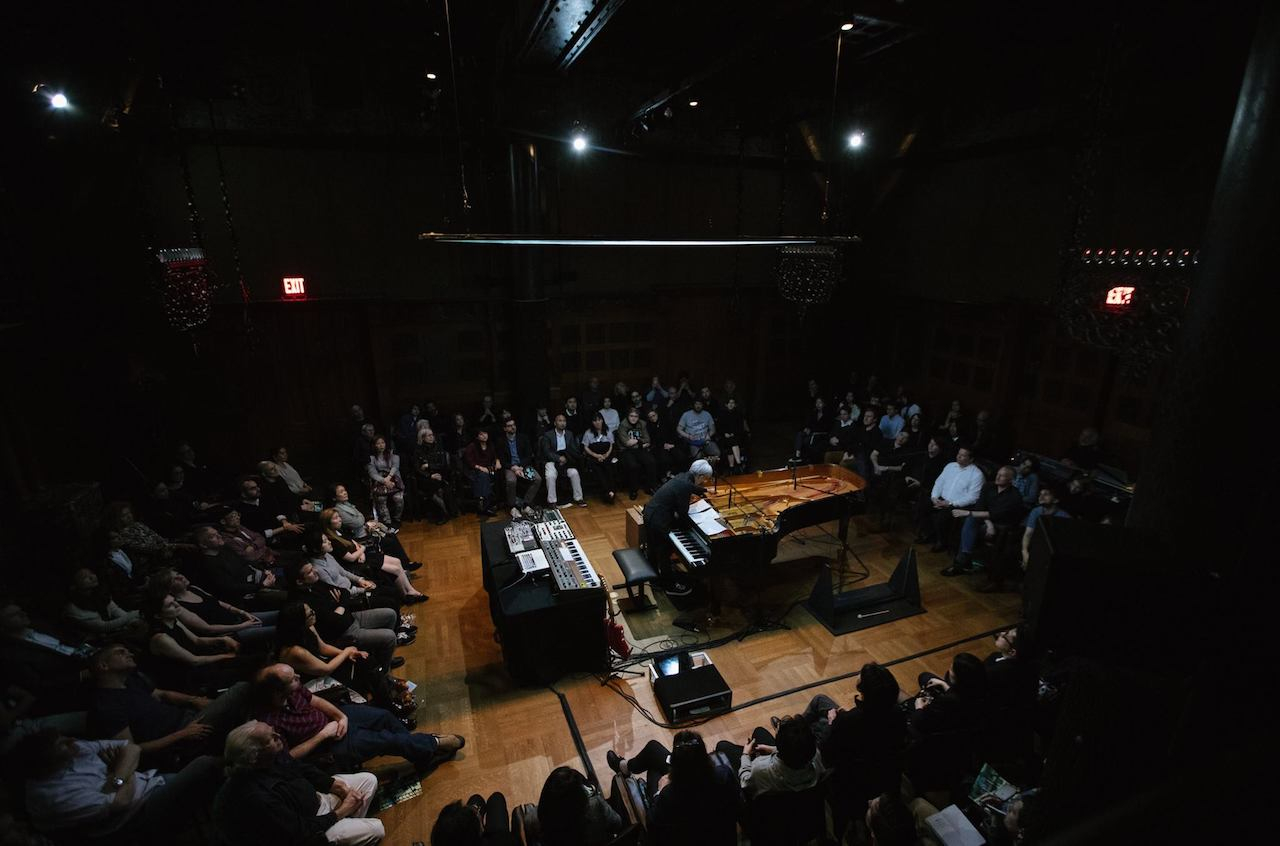- As I stood ogling Ryuichi Sakamoto's instruments while the room cleared out, I heard a friend call my name, and we went into the lobby to chat. After a couple of minutes we parted ways and I returned to the friend I'd come with. "Did you see her?" he asked. "Who?" "Björk was standing right beside you while you were just talking." I looked back but she'd disappeared behind the curtain that separated the lobby from the hall leading to the Park Avenue Armory's Veterans Room. Later, I'd think of my oblivious proximity to Björk as a fittingly enchanted cap to an already enchanting evening.
Of the Veterans Room, Decorator And Furnisher magazine wrote in 1885 that "the prepondering styles appear to be the Greek, Moresque and Celtic, with a dash of Egyptian, the Persian and Japanese in the appropriate places." Though parts of it have recently been restored, it does feel like a time capsule of the American Aesthetic Movement, filled with intricately patterned moldings, wrought-iron filigreed chandeliers and stained glass. These qualities, as well as the fact that the room is only able to hold around 100 seated guests, accounted for the scarcity of tickets to Sakamoto's two performances on April 25th and 26th.
Sakamoto was invited at a time when he wasn't sure what he might perform. Then, some point after he'd finished recording async, his first solo album in eight years, he decided that the Veterans Room would be the ideal place to premiere it. As he tells it, the record is "a soundtrack for an Andrei Tarkovsky film that does not exist." Tuesday's performance was a collaboration with the artist Shiro Takatani, who had, it seems, envisioned a film for this filmless soundtrack. Suspended above Sakamoto in the middle of the room was a downward-facing projection screen whose visuals changed with each piece of music. Leading with album openers "Andata" and "Disintegration," Sakamoto stood hunched over the front of a piano, scratching muted piano strings with his fingers as muddy views of a coastal city shone overhead.
For the most part, the music didn't directly correspond to the film's images, except when Takatani depicted the hastening chimes of "Tri" as rain drops falling on water. It's clear, though, that the visual artist had worked on the album's general aesthetic, as the source image used for the cover showed up onscreen. The same goes for a shot of a bird's eye view of a piano, which appears in the LP's liner notes.
Natural phenomena feature prominently on async, both in field recordings and in the words of American writer Paul Bowles ("How many more times will you watch the full moon rise?") and Soviet poet Tarkovsky ("Wave follows wave to break on the shore / On each wave is a star, a person, a bird"). Waves are a complex subject for Sakamoto, who understands them as markers of time and containers of worlds, but who was also a vocal proponent of aid for Japan after the tsunami in 2011. Takatani's work also fixates on water—onscreen, waves gently lapped on a beach and ripples on a watery surface disfigured an otherwise pristine view of clouds overhead. As the somber chords of "Ubi" sounded late in the performance, Sakamoto looked upward at this latter scene. He's said that async contains some of his most personal music, and he played the album in full except for its atonal title track and "Stakra."
Alongside the piano, guitar and a table containing an oscillator, a Prophet-5 synth and a laptop, were a few other objects that didn't resemble musical instruments. Sakamoto played vertical metal rods with a bow and, with a mallet, gently struck a meter-long comb-like object. During "ZURE," he got up from the piano and began tapping and rubbing a large pane of glass with an assortment of mallets, coaxing out groans and rumbles. As he did so, he was made to look directly at his reflection. Everyone in the room could see it too.
Photo credit /
Da Ping Luo
